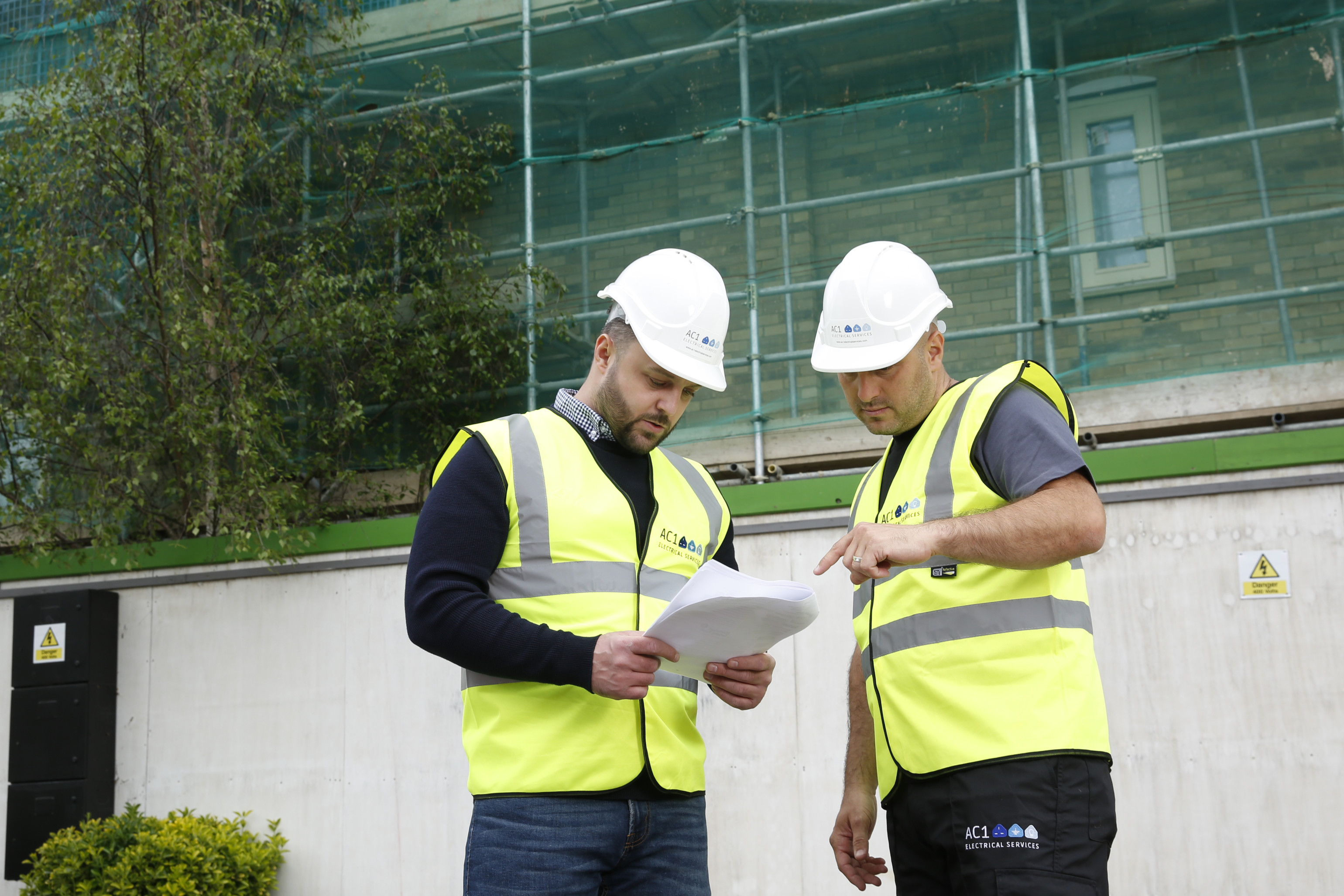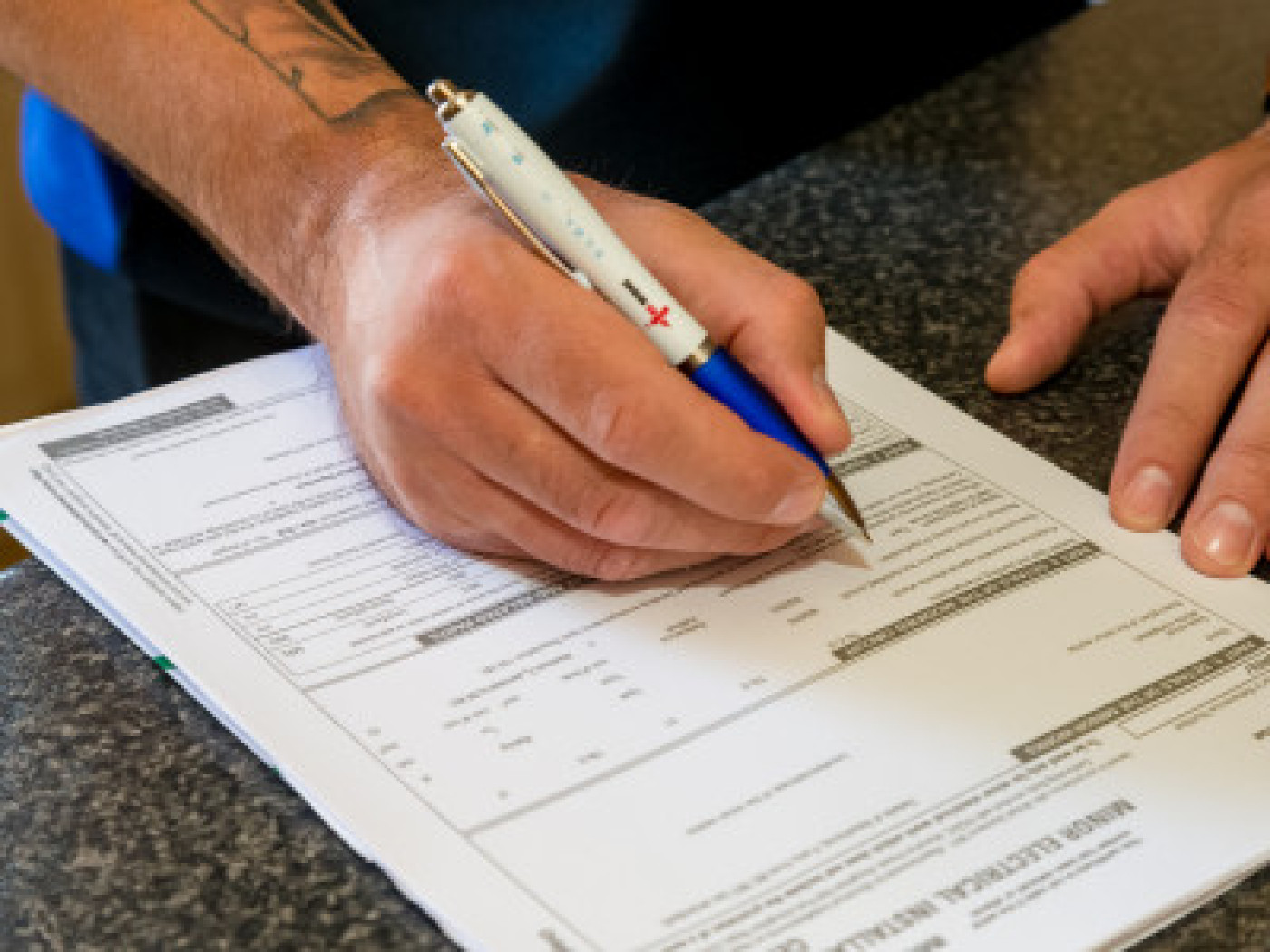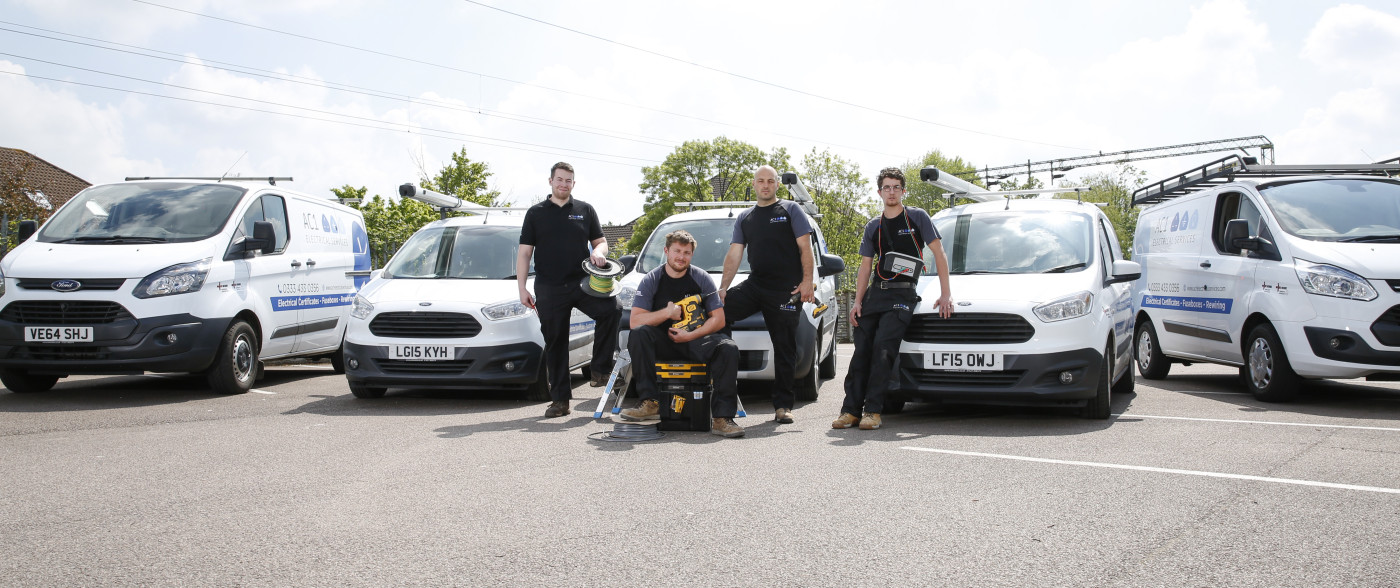You’re legally required to get an EICR every five years, or at the start of each new tenancy. This rule applies to all privately rented homes in England, and it’s your responsibility to keep it up to date.

Electrical Installation Condition Report (EICR)
Ensure Your Property is Electrically Safe and Legally Compliant
At AC1 Electrical, we provide thorough, reliable Electrical Installation Condition Reports (EICRs) for residential, commercial, and rental properties. Whether you are a homeowner, landlord, or business owner, an EICR gives you the confidence that your electrical systems are safe, compliant with UK regulations, and free from hidden hazards.
Our qualified electricians work across London, Essex, Hertfordshire, Cambridgeshire, Kent, and Buckinghamshire, to deliver professional inspections and clear reports that help you stay protected and meet your legal obligations.

What Is an Electrical Installation Condition Report?
An Electrical Installation Condition Report (EICR) is a full inspection of the fixed wiring in your property. It’s not just about checking boxes — it’s about understanding how your electrical system is holding up, and whether it’s doing its job safely.
We’ll take a close look at the essential parts of your setup, which usually includes:
The wiring running throughout the property
Light switches, plug sockets and fittings
Fuse boards (also called consumer units)
Earthing and bonding arrangements
Built-in lighting and fixed power outlets
Permanently installed appliances, such as cookers or electric showers
The goal is simple: to flag up anything that could be a danger — whether that’s ageing components, poor installation work from the past, or parts of the system that no longer meet today’s safety standards.
After the inspection and tests, we’ll issue a written report. This will explain what we found, highlighting:
Any signs of wear or damage
Potential safety risks, like electric shock or fire hazards
Circuits that are overloaded or poorly protected
Areas where the setup doesn’t meet current regulations
Recommended steps to put things right
Each issue is graded by urgency, so you’ll know exactly what needs attention first — and what can be scheduled for later.
Who Should Get an EICR?
EICRs aren’t just for landlords or big commercial sites — they’re useful for anyone who wants to be confident their electrics are safe. In some situations, they’re mandatory. In others, they’re just good sense.

If you’re a landlord
If you’re a homeowner
There’s no law saying you must get an EICR — but if your home is more than ten years old, or if you’re doing major renovation work, it’s a smart move. It’s also a good idea when buying or selling, so you know exactly what condition the electrics are in.
If you run a business
You’re expected to provide a safe environment for staff and customers. An up-to-date EICR is often part of that, especially in workplaces where the electrical demand is high or equipment is in constant use. Many insurers also request it as part of their cover conditions.
If you manage properties
Keeping multiple properties safe and legally compliant takes planning. Regular EICRs make your job easier — helping you stay ahead of potential problems and keeping tenants protected.
Why Choose AC1 Electrical?
AC1 Electrical is trusted by clients across the South East for a reason. We bring together expertise, transparency, and customer care to deliver a professional and stress-free service from start to finish.
We offer:
Fully qualified and experienced electricians, certified to carry out EICRs
Clear and upfront pricing with no hidden costs
Flexible appointment times to suit your schedule
Easy-to-understand reports with actionable recommendations
Optional remedial work, quoted quickly and carried out to the highest standards
We carry out EICRs on all types of properties, from small domestic flats to large industrial premises. Our team will treat your property with care, minimise disruption, and explain everything clearly.

What Happens During an EICR?
When you book an EICR with AC1 Electrical, here’s what the process involves:
1. Initial Consultation
We gather basic information about the property and its electrical history to prepare for the inspection.
2. Visual Inspection
Our electrician visually checks all accessible electrical components to look for signs of damage, wear and tear, or poor installation practices.
3. Electrical Testing
We carry out both dead and live testing to assess the safety and performance of your circuits. This includes:
Continuity testing (to check for proper connections)
Insulation resistance testing (to prevent electrical leaks)
Earth loop impedance (to ensure safe disconnection in the event of a fault)
RCD testing (to verify safety device operation)
4. Condition Report
You will receive a formal EICR document that details:
Whether the installation is satisfactory or unsatisfactory
Any faults or non-compliances identified
Each issue categorised by severity:
C1 – Immediate danger (requires urgent action)
C2 – Potentially dangerous (requires improvement)
C3 – Improvement recommended
FI – Further investigation required
5. Next Steps
If remedial work is required, we will provide a clear quote and offer to carry out the work efficiently and professionally. Once complete, we can issue a follow-up certificate to confirm the installation is now compliant.
Frequently asked questions about Electrical Installation Condition Report (EICR)
The duration depends on the size and complexity of the property. A typical domestic EICR takes between 2 to 4 hours. Larger commercial buildings may take a full day or more.
Yes, for landlords and commercial property owners in the UK, it is a legal requirement. For homeowners, it is strongly recommended, especially if you’re buying, selling, or living in an older property.
If your EICR is marked as unsatisfactory, remedial work must be completed to bring the installation up to standard. We can provide a clear quote and carry out the repairs quickly, followed by re-testing and certification.
- Domestic properties: every 10 years or when selling/buying
- Rental properties: every 5 years or at the start of a new tenancy
- Commercial properties: every 3 to 5 years, depending on use and risk
- Industrial or high-risk environments: more frequently, as advised
Looking for an EICR Near Me?
If you're searching for a reliable Electrical Installation Condition Report near me, AC1 Electrical offers EICR services across a wide area. Our electricians are available throughout:
Hertfordshire
Visit our Hertfordshire region page →
Including Ware, Hitchin, Royston, Harpenden, Hatfield, Hertford, St Albans, Stansted, Stevenage, Hoddesdon, Borehamwood, Buntingford, Potters Bar, Waltham Cross, Broxbourne, Hemel Hempstead, Sawbridgeworth, Welwyn Garden City, Bishops Stortford, Letchworth Garden City
Essex
Visit our Essex region page →
Including Broomfield, Great Baddow, Danbury, Ingatestone, Ongar, Great Dunmow, Braintree, Witham, Maldon, Chelmsford, Brentwood, Epping, Harlow, Colchester, Chigwell, Woodford Green, Buckhurst Hill, Loughton, Bures, Halstead
London
Visit our London region page →
Including Havering, Barking and Dagenham, Redbridge, Waltham Forest, Enfield, Haringey, Newham, Tower Hamlets, Hackney, Islington, Camden, Westminster, Barnet, Lambeth, Southwark, Lewisham, Greenwich, Bexley, Brent, Central London
Cambridgeshire
Visit our Cambridgeshire region page →
Including Cherry Hinton, Trumpington, Girton, Arbury, Barnwell, Haddenham, Soham, Newmarket, Haverhill, Saffron Walden, Newport, Fulbourn, Great Shelford, Comberton, Cottenham, Waterbeach, Huntingdon, St Ives, St Neots, Saffron Walden
Kent
Visit our Kent region page →
Including Dartford, Gravesend, Swanley, Sevenoaks, West Malling, Aylesford, Rochester, Gillingham, Kings Hill, Longfield, Greenhithe, Dunton Green, Otford, Meopham, Shorne
Buckinghamshire
Visit our Buckinghamshire region page →
Including Aylesbury, Milton Keynes, High Wycombe, Chesham, Amersham, Beaconsfield, Marlow, Buckingham, Gerrards Cross, Princes Risborough, Winslow, Wendover, Burnham, Olney, Newport Pagnell, Iver, Stoke Mandeville, Haddenham, Great Missenden, Flackwell Heath
Wherever you are located, we can help you meet your legal responsibilities and protect your property with a fully certified EICR.
Book Your Electrical Installation Condition Report Today
Don’t wait for an electrical fault to become a safety issue. Booking an EICR with AC1 Electrical is the first step to ensuring your electrics are safe, compliant, and ready for the future.
Contact us today to request a quote, ask any questions, or arrange your inspection at a time that suits you.
Call our team directly
WhatsAppContact us on WhatsApp
EnquireSend us an enquiry via our website